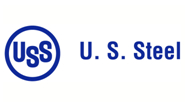Steel Mills

Burritt: USS Sees No New EAF Expansions for 'Foreseeable Future'
Written by Michael Cowden
February 1, 2021
U.S. Steel does not plan to build additional electric-arc furnace capacity for the “foreseeable future,” company executives said.
The company also plans to keep the “A” blast furnace at its Granite City Works in southern Illinois idled, they suggested.
U.S. Steel acquired two flat-rolled EAFs when it closed its deal for Big River Steel’s mill in Osceola, Ark. And it has built an EAF to supply the tubular operations of its Fairfield Works in Alabama.![]()
“Would you consider expanding EAF capacity from here on?” UBS analyst Andreas Bokkenheuser asked during a fourth-quarter earnings conference call last week.
U.S. Steel President and CEO David Burritt said the company was focused instead on operating the EAFs it already has.
“Everything is on the table,” Burritt said. “But for the foreseeable future, we are focusing on this footprint and making sure that we run it extraordinarily well.”
Cost is also a factor. “We have to find this solution to reducing capital intensity. And we have to make sure we don’t get over exuberant and start spending a bunch of capex,” Burritt added.
Burritt did not mention any specific EAF-related expansion plans that might have been shelved.
But Big River Steel CEO David Stickler has in the past spoken about building a second EAF flat-rolled mill–perhaps in Brownsville, Texas–with approximately the same capacity as the Arkansas mill. The Osceola mill claims capacity of 3.3 million tons per year.
A Big River Steel spokeswoman referred comment on the matter to U.S. Steel. A U.S. Steel spokeswoman declined to say whether Burritt’s remarks were aimed at the Brownsville project. “We have nothing further to report on Brownsville at this time,” she said.
As for the “A” blast furnace at Granite City, it’s still temporarily idled, according to a presentation released along with U.S. Steel’s fourth-quarter earnings.
Bokkenheuser asked U.S. Steel what was “holding you back” from restarting the “A” furnace. “This is the footprint that we believe positions us to be the most successful, the most profitable and allows us to win in the strategic markets where we choose to participate in 2021 and beyond,” Vice President of Investor Relations Kevin Lewis replied.
While U.S. Steel is content with its current blast furnace configuration, it will “remain adaptive” as market conditions dictate, he added.
The U.S. Steel spokeswoman said she had nothing to add beyond the presentation and what was said during the earnings call.
U.S. Steel has two furnaces at Granite City: “A” and “B.” U.S. Steel announced in late March, following the outbreak of the COVID-19 pandemic, that it would temporarily idle the “A” furnace.
Granite City, when operating both furnaces, has annual steelmaking capacity of 2.8 million tons per year, according to U.S. Steel’s website. It makes hot-rolled, cold-rolled and coated flat-rolled steel for a range of end markets including construction, automotive, and pipe and tube.
Steel Market Update’s average hot-rolled coil price stood at $540 per ton ($27/cwt) at the end of March 2020. Hot-rolled coil prices have since more than doubled to an all-time high of $1,150 per ton this week.
Market participants have been keen to know whether additional furnace capacity will be restarted. Some had hoped that additional supply would come online to relieve a supply squeeze in the spot market. Others fear that additional supply could overshoot demand and lead to a price decline.
Cleveland-Cliffs, the only other integrated flat-rolled steelmaker in the U.S., has also opted to keep supplies in check.
Cliffs has announced plans to restart a second furnace at its steel mill in Cleveland, Ohio, but that move will be offset by the idling of another furnace in Middletown, Ohio, for maintenance.
By Michael Cowden, Michael@SteelMarketUpdate.com

Michael Cowden
Read more from Michael CowdenLatest in Steel Mills

CRU: Tata Steel looks to shed 1,600 jobs in the Netherlands
The company said, “The challenging demand conditions in Europe driven by geopolitical developments, trade and supply chain disruptions and escalating energy costs have affected the operating costs and financial performance."

Reports: Federal funding for Cliffs’ project could be slashed
Elon Musk's DOGE is determining which Department of Energy grants to advance and which ones to terminate, according to several media outlets

Trump still against selling USS to Japanese firm: Report
Despite ordering a new review of Nippon Steel’s bid for U.S. Steel, President Trump said he is still against selling USS to a Japanese company, according to media reports.

Algoma looks to sell more steel in Canada in wake of Trump’s tariffs
The Canadian steelmaker said its absorbing higher tariffs as it moves forward.

Ancora abandons plan to take over leadership of USS
Investment firm Ancora Holdings Group has halted its play for U.S. Steel's board, citing Nippon Steel’s proposed bid for USS “gaining momentum.”
